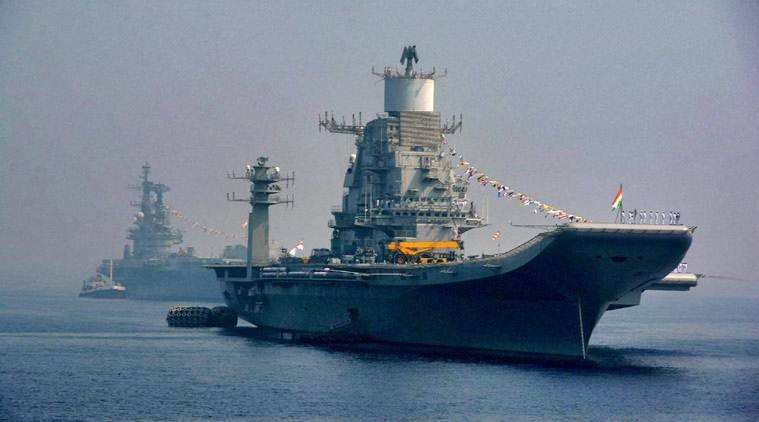Debajit Borauh
29th May 2021

A pioneer of India’s maritime power theory, KM Panikkar said that, “to other countries the Indian Ocean could be only one of the important oceanic areas, but to India it is a vital sea because its lifelines are concentrated in that area, its freedom is dependent on the freedom of that coastal surface”. India’s interest in the Indian Ocean region is vast and its engagement is deep. According to the Indian Port Industry Report, around 95% of India’s trading by volume and 70% by value is done through maritime transport. As a primary power in the Indian Ocean region, the strategic interest of India is interconnected to both its security and economic interests.
Prime Minister Narendra Modi said that India must assume “our responsibility to shape its future” and declared the Indian Ocean region to be at the top of India’s policy priorities. India as a major power in the region is working towards translating India’s natural geographical advantage and close cultural ties with other littoral countries in the region, to promote and protect its interest in the region. India and partnering countries have been working to ensure a safe, secure and stable Indian Ocean region. India believes collective action and cooperation will best advance way to established peace and security in the region.
However, China, as an emerging stakeholder in the Indian Ocean region, has been expanding its strategic footprints by building a huge number of infrastructure facilities in the littoral states of the region. Chinese maritime infrastructure powers projections already have undertaken a number of projects in littoral countries in the region, like Pakistan, Sri Lanka, Myanmar, Bangladesh and African Countries etc. China’s engagement with these countries in terms of trade and investment is to promote and safeguard its expanding interests in the region. Through its Belt and Road Initiative (BRI), China has been deepening security ties in the garb of commercial activities, and engaging in predatory economic practices, resulting in debt traps in countries like Sri Lanka. With the Sri Lanka government handing over of its Hambantota port to China, the Chinese government can exclusively carry out development activity within 50 kilometers from the center of the Hambantota Port during the entire lease period. Through these initiatives or activities, China is trying to shape the nature of the regimes in the region, which is detrimental to India’s interest in cementing and expanding its engagements in its immediate neighbourhood.
In the coming years, the Indian Ocean region is bound to witness increased Chinese military presence, which makes it imperative for India to take an active and assertive role in managing the emerging geopolitical scenario. Therefore, India has been giving much importance on maritime security, which includes naval modernization, military infrastructure build-up, maritime agreement, and allocating more and more budget to its war fighting capabilities. For instance, India, Japan and African countries have initiated an Asia Africa Growth Corridor (AAGC) to pose an alternative to the Chinese BRI and entered into a number of cooperative arrangements, such as the foundational agreements signed with the United States and white shipping agreements with a number of other countries. India has initiated development project which is “Security and Growth for All in the Region” (SAGAR) to develop its ports along the eastern and western coasts. Under this project, India has been developing its existing ports and six new mega ports will be developed in the region. India is enhancing cooperation with countries like the United States, Japan and Australia and has been working on joint exercises, equipment transfer and joint training programmes towards greater maritime security in the Indian Ocean region.
The United States remains a pivotal power in the Indian Ocean region and the signals relating to a greater military Cooperation between India and the US are significant from the point of managing China’s rise and its growing influence in the Indian Ocean region. India, Japan, Australia and the United State initiated the Quadrilateral strategic dialogue (QUAD) in the region. The Quad is not centered entirely on China, and it is evolving into a multidimensional forum, but its intention to counter China’s aggression and unilateral activities remains paramount. The joint activities of the Quad countries, particularly in the maritime domain, will be crucial to India’s interests in the Indian Ocean region. In addition, India’s active engagements with the ASEAN countries, through its Act East policy, particularly with countries like Vietnam and Indonesia, will be crucial for India’s fundamental goal and objective of greater maritime security. For instance, Vietnam has allowed the Indian navy access to its southern port Nha Trang which is located in the Cam Ranh Bay. Access to Cam Ranh Bay is a major step because the Bay is located near the Malacca Strait and allows India to exercise a larger influence over the important shipping route.
Besides, India is also conscious of security threats in the Indian Ocean region including the challenge of international terrorism and extremism, maritime piracy etc, and in this dimensions, India is working through regional diplomacy to enhancing mutual security and common well-being. India is working for a free, open and inclusive Indo-Pacific region, and in this context, a free, open and inclusive Indian Ocean regions assumes paramount importance. India has been engaging in multilateral institutions and has been adopting more collective approaches in the region. The Indian Ocean region occupies a pivotal position in India’s overall rise, and how India promotes and protects its interest in the region, through self-help as well in partnership with like-minded countries will remain crucial in the times of come.
* The author is a PhD Scholar, Department of International Relations, Central University of Sikkim, Gangtok.
Disclaimer: The views expressed in the article are those of the author
![]()

